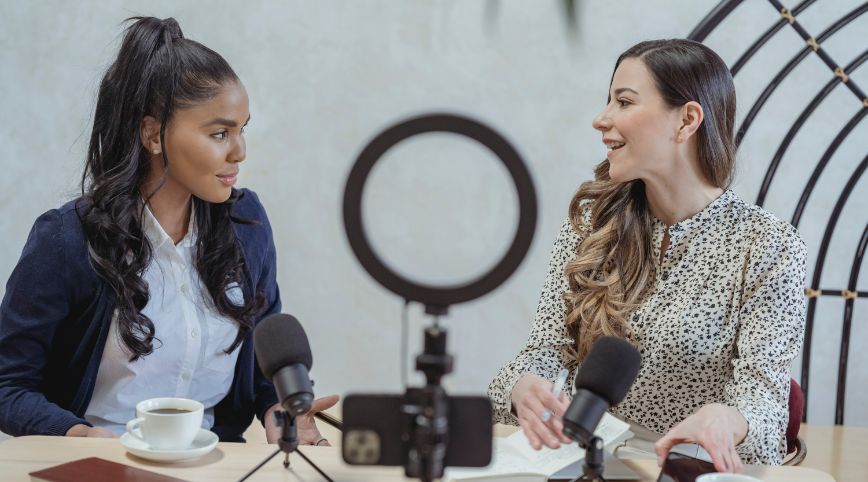August 16th, 2023 | Alex
9 Types of Influencer Marketing
Influencer marketing can take many different forms, and it’s important to choose a strategy that suits your business’ size, budget, objectives and your brand’s tone.
Social media is a mainstay in a business’ overall brand strategy and having a solid influencer marketing running alongside it could elevate your brand exposure massively.
In this article, we will take you through 9 different types of influencer marketing strategies and how they can benefit your brand.
Let’s get into it.
Why should you consider influencer marketing?
Influencer marketing is when your brand partners temporarily with a social media influencer who then promotes your products or services to their audience.
With 51% of marketers saying influencer marketing helps them acquire better customers, it shows that consumers today are generally more receptive to personal, relatable recommendations from people they recognise.
Partnering with influencers who are relevant in your industry can extend your reach to an audience of potential customers who align with your business interests.
But first, you must define the business objectives you want to achieve – for example:
- Increase engagement.
- Grow your channels.
- Drive sales.

Types of Influencer Marketing Strategies
Here are 9 influencer marketing strategies that you could use for your brand.
1. Giveaways and Contests
Campaign objectives:
- Raise brand awareness.
- Exposure to new audiences.
- Grow your social following.
- Increase engagement.
Giveaways and contests are a partnership between your brand and an influencer, giving their followers the opportunity to win your products or other branded prizes.
The influencer usually creates a post showing off the prizes, with specific directions about how to enter included in the caption – for example, you might ask that entrants follow your brand’s social media account, sign up to your mailing list, and tag two friends in the comments to enter.
Giveaways are a great low-cost lead-generator because they come with mutual benefits for the influencer as well.
While you can almost guarantee an increase in likes, shares and comments, they may not necessarily have longevity, resulting in a drop-off after the giveaway ends.
It’s really important that you check local and national laws surrounding giveaways before you start planning, as well as any guidelines for giveaways specific to your chosen social media platform.
2. Sponsored Post or Social Media Mention
Campaign objectives:
- Drive sales.
- Increase brand awareness.
- Build trust.
For a sponsored post, you agree to pay an influencer to review your product or service in a social media post.
It’s important that the post is clearly marked as an advertisement in order to stay within advertising regulations.
Sponsorships are a widely-used and cost-effective marketing approach, but your brand can request a social media mention or tag without requiring a formal sponsorship.
3. Sponsored Blog Post
Campaign objectives:
- Drive sales.
- Increase brand awareness.
- Build trust.
Sponsored blog posts are very similar to sponsored social media posts. You reach out to an influential blogger and pay for a promotion or review.
It’s important that you provide the influencer with any brand guidelines, themes, or other expectations first.
4. Reviews, Gifts, Unboxings
Campaign objectives:
- Increase brand awareness.
- Build trust.
Gifting products (also called product seeding) can be a great way to initiate a working relationship with an influencer you haven’t worked with before, especially micro-influencers who find it exciting to receive gifts from brands.

Including a personalised discount code for their audience is often a good idea also. In return, they can post an unboxing video or customer experience review on their social channels.
These formats can be especially effective because they bring the influencer’s audience along the customer journey with them.
5. Brand Ambassadors
Campaign objectives:
- Build trust.
- Increase engagement.
- Strengthen influencer connections.
A brand ambassador is one example of a longer-term influencer partnership that’s somewhat similar to a celebrity endorsement.
The influencer becomes the face of your brand over a defined period, for example a year, with the advantage that the influencer can’t also promote competing brands at the same time.
A brand ambassador is usually someone who has a deep connection with your brand and actively integrates your products into their lifestyle because they enjoy promoting them.
6. Brand Experience Events
Campaign objectives:
- Maximise brand exposure.
- Gain press coverage.
- Professional networking.
Events can be a really successful marketing tool and a great way to drum up excitement around your brand.
Invite influencers to a brand event, for example to promote an influencer collaboration you’ve done.
Make sure you have great lighting to maximise photo opportunities and set up a hashtag on socials – this encourages your guests to document their experience and means that you can easily find all related content easily after the event!
7. Influencer Interviews, Features and Other Guest Content
Campaign objectives:
- Content generation.
- Boost engagement.
- Maximise reach.
- Increase following.
- Establish brand authority.
This is when your brand collaborates with an influencer to create content for your marketing channels, such as blogs, websites, or newsletters.
Showcase your brand as a thought leader in your industry by interviewing established influencers about their insights, experiences and expertise in your niche.
Consider how you could stretch your feature into a series if it performs particularly well.

8. Guest Blogging
Campaign objectives:
- Improve brand awareness.
- Increase traffic and engagement.
- Boost authority and reputation.
Guest blogging can take one of two routes depending on what suits your brand and business. Either you accept blog entries from well-known influencers to post on your own blog, or you act as the guest and submit your own expert content to recognised industry bloggers.
Either way, guest blogging is an effective PR technique – a popular type of PR strategy based around creating valuable content that draws people to your brand.
9. Social Media Takeovers
Campaign objectives:
- Increase traffic and engagement.
- Promote products.
- Reach new audiences.
During a takeover, your brand allows an influencer to take control of your social media account for a temporary period (anything from a day to a few weeks) and engage directly with your audience.
The influencer can offer a fresh perspective and, through cross-promotion of the collaboration on their own platforms, there are mutual benefits for the influencer and yourself, as long as you’re comfortable enough to share your login details for a while!
Influencer Marketing With Gala PR
With a form of influencer marketing for nearly every brand and budget, the popularity of using this as an effective PR strategy comes as no surprise.
At Gala PR we work with live entertainment events and help them in coming up with effective PR strategies. We integrate influencer marketing techniques into these strategies also.
We have worked with a variety of influencers who have been proven to help increase the brand exposure of any events we have paired them with.Contact us today and we can put in motion a PR strategy which will help take your live event to the next level.